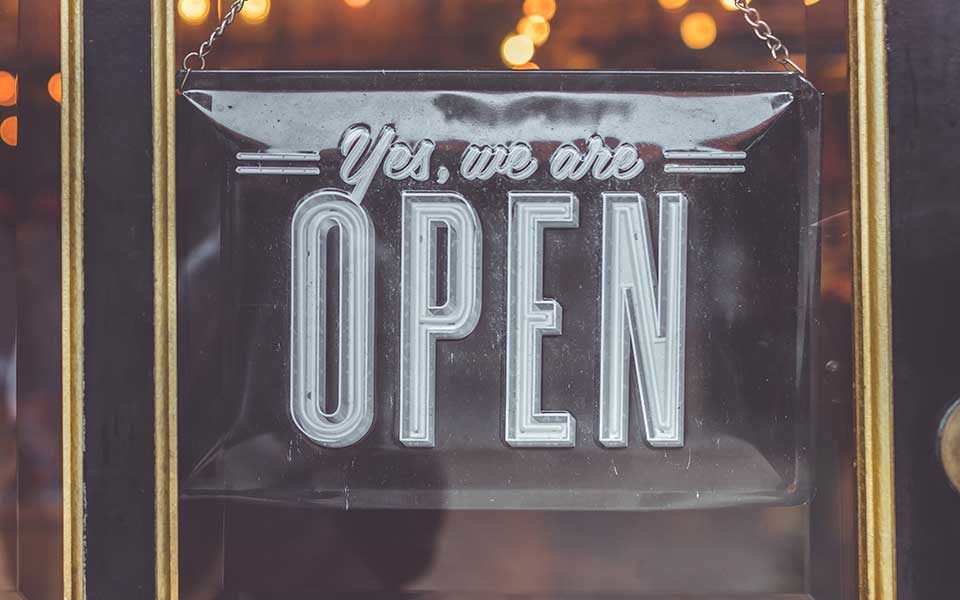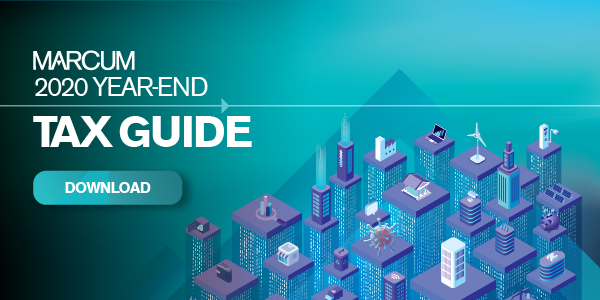Restaurant Recovery: An Update on PPP Loan Forgiveness During COVID-19
As the coronavirus swept across the country, collateral damage has been far and wide, with the restaurant industry sustaining one of the heaviest blows. The food and beverage industry as a whole has been shaken to the core, impacting businesses all along the supply chain, including restaurant owners, operators, farmers, food distributors, and restaurant staff. Many F&B businesses applied for, and received, forgivable loans under the federal Paycheck Protection Program (PPP), created under the Coronavirus Aid, Relief & Economic Security (CARES) Act to help sustain businesses through these difficult times. Now, their attention has turned to the forgiveness application process and maximizing the use of the funds to ensure that full forgiveness of these loans is realized.
Some of the most common questions related to forgiveness of PPP loans are answered below.
PPP Forgiveness Application
On June 17, 2020, the SBA released two applications for PPP forgiveness: the Standard form and the EZ form. Both forms can be download directly from the U.S. Treasury website at https://home.treasury.gov/policy-issues/cares/assistance-for-small-businesses. The EZ form is most commonly used.
Requirements for Form EZ:
You must meet one of the following three criteria:
- You are self-employed with no employees;
- You did not reduce the wages of any employee earning less than $100,000/year by more than 25% during the covered period as compared to Q1 2020, and you did not reduce your FTE from January 1, 2020, through the end of the covered period (except for the allowable exceptions); OR
- You did not reduce the wages of any employee earning less than $100,000/year by more than 25% during the covered period as compared to Q1 2020, and you were unable to operate during the covered period at the same level of business activity as before February 15, 2020, due to requirements established by the Secretary of Health and Human Services, CDC or OSHA.
EZ filing is not based on the loan dollar amount. It is based on safe harbors and exemptions.
There is some confusion around the number of employees and FTE requirements on the application. The number of employees is reported in the top section of the application, but FTE is used for the forgiveness reduction calculations. You must report both.
Safe Harbors
There is a new safe harbor for an inability to open due to mandated closures for public safety, which may significantly impact the food and beverage industry.
- The new safe harbor applies to all loan sizes. If a restaurant is unable to open its dining room due to governmental orders, it is not required to return to full employment, thereby meeting the safe harbor. If you meet this safe harbor requirement and have not reduced wages more than 25%, you can use the EZ form and must complete all sections. This safe harbor rule applies if the closure orders affected any part of your covered period and the orders were issued by one of the agencies indicated in the application instructions.
- The wage safe harbor is based on wage rates excluding tips and tip pool compensation.
Forgiveness
When to submit for forgiveness:
- You have 10 months from the end of your covered period to submit for forgiveness, but you can submit at any time prior to that once the funds have been spent and assuming your bank has opened its application process.
- Check with your lender to see if it has opened its application process and, if so, what the process is and what documentation is required. Not all banks have opened the application process, and some are only accepting applications for loans greater than
$150,000 initially. - If you had a wage reduction greater than 25% during the covered period and apply before the end of the covered period, it will be assumed the wage reduction existed for the maximum 24-week covered period.
- The lender has 60 days from the receipt of the application to submit it to the Small Business Administration (SBA). The SBA then has 90 days to review and accept or reject the application. The maximum review time should not exceed 150 days from application date.
Non-payroll uses of PPP funds:
- At least 60% of PPP funds must be used for payroll purposes only (wages, health care and retirement costs).
- The remaining 40% may be used for rent, utilities, and mortgage interest.
- Other business expenses are not allowable uses of the funds.
If unable to receive full or partial forgiveness:
- Profitability is not a consideration in PPP loan forgiveness; forgiveness is based on use of the funds. However, only funds used during the covered period will be eligible for forgiveness.
- Unused funds turn into a loan that must be repaid with interest. Interest on these funds accrues from the beginning of the covered period.
- The restrictions on use still apply to funds not forgiven. Funds must be used for payroll costs, rent, utilities, and debt interest only. There are no penalties. You will just have a loan that needs to be spent on the allowable uses at some point or be repaid if the business does not reopen.
- If you transfer or rehire employees to work at another location, you may be able to include these employees in your calculation if both locations were included in the original loan application.
- If you are a franchisor, and also have your own corporate locations, the franchise locations may count for the total number of stores in terms of PPP forgiveness depending on what locations were included in the original PPP loan application.
- We have seen nothing in the guidance which indicates forgiveness will be reduced by insurance proceeds.
Calculations
Full-Time Equivalent Employees (FTE):
- For loan forgiveness purposes, FTE is based on 40 hours per week, per the guidance issued by the Small Business Administration (SBA) and U.S. Treasury.
- For the FTE reduction lookback period, you can select either January 1-February 29, 2020, or February 15-June 30, 2020. If you are a seasonal employer, you have a third option of any consecutive 12-week period between May 1 and September 15, 2019.
- If your FTE total is reduced due to employees not returning to work or finding jobs elsewhere, you made a good faith written offer to rehire which was declined, and you were unable to find suitable replacements, you do not have to include these employees in your calculations and you will not be penalized.
- If an employee works from 9:00-5:00 but takes an hour for lunch, the FTE calculation could be different depending on whether the employee is hourly or salaried. If the employee is salaried and the normal work week is 35 hours, assume (1) FTE for that employee. If the employee is hourly, use 35 hours.
- If business is anticipated to slow and the FTE will drop during the remainder of your covered period, end the covered period and apply for forgiveness once the funds have been exhausted. There is nothing in the guidance that requires you to maintain your FTE levels after the covered period or December 31, 2020, whichever comes first.
- The end of the loan period used for measuring whether labor has been returned to former levels is the last pay period.
Wages:
- Any employee who was paid $1,923.08 for any week during 2019 (annualizes to $100,000) can be removed from the wage reduction calculation. Likewise, an employee earning a $50,000 annual salary who was paid a bonus of $2,000 at any time during 2019 can be excluded from the wage reduction comparison, assuming you pay the person weekly. This can greatly reduce the number of people to include in your calculation.
- The 25% reduction refers to wages per hour on an employee-by-employee basis.
- The eligible compensation forgiveness amount includes only gross wages; no employer federal taxes are eligible. State or local taxes assessed on wages, such as state unemployment paid by the employer, are eligible.
- To calculate weekly wages for a server, use their hourly rate. If wage rates changed or the employer was paying tip replacement compensation, then use the average of wages and tips during the period.
- Do not include cash tips/compensation not paid by the employer in Schedule A.
- PTO must actually have been paid during the covered period in order to be eligible for forgiveness. Do not include PTO in the calculation of any unpaid time off.
- It is possible that bonus wages in the look-back period may count in determining the 25% wage reduction when comparing your 2020 post-PPP payroll.
- A sole proprietor is able to take a draw and apply those wages to the PPP forgiveness calculation; however, a sole proprietor is limited to $20,833 or 2.5 times their 2019 Schedule C net income, whichever is lower. And sole proprietors should wait at least 11 weeks before applying for forgiveness in order to maximize the amount forgiven for payroll costs.
- Those experiencing difficulty reaching the 60% mark for payroll forgiveness may be able to fill the gap by including employee bonuses; however, the $100,000 annual salary cap per employee applies.
Miscellaneous
Related party rent limitation:
- If the lessor and lessee of a property are related, only the mortgage interest–not the rent paid–is an expense eligible for forgiveness. The lessee or the lessor can claim the interest, but not both. If there is no mortgage, then there is no eligible expense.
Transportation costs:
- Per the Treasury FAQs, a service for the distribution of transportation refers to transportation utility fees assessed by state and local governments. Payment of these fees by the borrower is eligible for loan forgiveness.
EIDL Loans and Advances and the PPP:
- Loans under the SBA’s Economic Injury Disaster Loan program and advances can be used for payroll if used outside of the PPP covered period.
- If you received an EIDL advance, it will reduce the forgiveness of your PPP loan by the amount of the advance. If the advance was greater than the PPP loan, there will be no forgiveness of the PPP loan.
Many business owners applied for Paycheck Protection Program loans in order to maintain payroll during the COVID-19 pandemic. The deadline to apply for a PPP loan was August 8, 2020. The SBA will fully forgive all PPP loans, provided that all borrower and documentation requirements are met.
There is currently speculation that there may be a second draw for PPP loans for certain industries that have been especially hard hit by the pandemic, which presumably would include the food and beverage industry. There is also speculation that PPP loans of $150,000 (or less) will be forgiven automatically. We do not expect definitive resolution of these and other related questions until after the November elections.
Marcum can guide your company through the applicable regulations, as it continues to evolve. For questions and assistance, contact your Marcum professional or visit us online.







